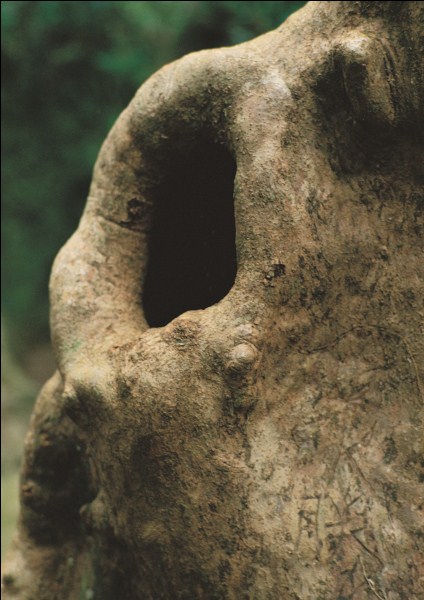Dear Integral Meditators,
I hope you have had a good week, the last few weeks for me seem to have been a period of adjustment making on different levels, and challenges that reflect those adjustments. Of course adjustments, changes and the challenges that go with them are all a fundamental part of the fabric of our life. One thing that I find with a daily meditation practice is that it really helps me to negotiate these periods of change and adjustment in an energetically ergonomic way; one learns to expend enough energy to meet the demands of the situation, and enjoy the learning that comes from it, without chasing ones tail unnecessarily and getting exhausted…
This weeks article focuses on love as the journey toward wholeness, I hope you’ll find that it treads the line between looking at “big”ideas and staying grounded and practical!

Love as the Journey Towards Wholeness; Three Awareness Perspectives
There is a close relationship (ideally) between the experience of love and the practice of meditation. If we say that love is essentially the journey toward the experience of wholeness within ourselves, and define meditation as a practice that takes our mind from the experience of distraction and diversity toward a state of unity and oneness, then I think it is not difficult to see how they support and enhance each other:
- Whenever we experience love (for example toward another person), our heart and mind expand, connect and unify in a way that closely resembles a relaxed, open, meditative state
- Whenever we focus the mind in an un-distracted, unified state in meditation, we can begin to feel the flow of love and life-force in our body
In this article I want to look at three ways in which we can use meditation and mindfulness as a part of our journey toward wholeness and love.
Meditation as an inward journey toward love and wholeness
The first way in which we can experience love through meditation is by journeying deeper into the true nature of our own consciousness. If we go beyond the awareness of ourself as a physical body, and then beyond our awareness of oursef as a psychological collection of habitual thoughts, feelings and images, we discover the formless, timeless, witnessing dimension of self that lies beyond.
This formless, timeless self is referred to in the great wisdom traditions as the True Self, so called because it is the self within us that remains constant and unchanging through-out our life. It is also called the Universal Self, because the formless, timeless, witnessing self within me is exactly the same as the formless, timeless, witnessing self in you, in all human beings, animals, plants and indeed anything that possesses consciousness. So, by connecting to the formless, timeless self we connect to a dimension of our being that is constantly and experientially in a state of oneness, wholeness and love with everything else in the Universe.
Meditation as an outward journey toward love and wholeness
The second way in which we can experience love and wholeness through meditation is by making the effort each day to expand our circle of concern so that it becomes progressively larger and larger. We start by extending love empathy toward ourself, then our family and friends, then people we don’t know, then people we may not like, expanding ever outward to include all living beings (yep, animals and plants too).
To experience love in this way is to be mindful that everyone matters, and to make our decisions based around this recognition. Of course we can’t avoid making decisions that hurt others at times, or that will harm them one way or another, but to live in a state of love means to live in a state where everyone is included, and we make our decisions based around an awareness of this inclusivity.
Opening the heart; facilitating the ongoing giving and receiving of love in our life
The third way we can grow our love each day is to make sure that our heart is energetically open to the giving and receiving of love. You can feel whether your heart is energetically open right now by tuning into the centre of your chest-space. Is this area of your body open and dilated, allowing energy to flow? Or is it contracted and closed, unable to give or receive love or life energy? If you spend most of your time with your heart energetically closed, then you will end up like so many of us do feeling starved of loving energy and feeling isolated and alone even when surrounded by others.
Yes, when you open your heart to the world you may feel more vulnerable, and yes it does take courage (and discernment), but if you take that risk then you will feel alive each day with the energy of love, and allow your life to be informed by that love. The alternative is to live in a mental “ivory tower” heart closed, risking nothing but gaining nothing. You can deaden the pain in your life by closing your heart, but by doing so you cut yourself off from the flow of love, which is a high price to pay indeed.
One Minute Mindfulness for Practically Integrating the Three Above Techniques:
- Spend a minute dropping your mental baggage and resting in the formless, timeless, witnessing dimension of your consciousness, recognize that on this level of your consciousness you are actually and literally always in a state of oneness and wholeness with all other living creatures, and the whole living universe. Rest in the love baby!
- Take a minute each day to care about someone (human, animal, plant) that would normally be outside of your circle of concern. Make the effort each day to include more and more living things in your circle of love and wholeness
- Through-out the day be mindful of your physical heart space. Is it energetically closed, defended and dead, or open, alive and flowing? Try and consciously increase the amount of time in your day that your heart is in a dilated, open state of giving and receiving love.
© Toby Ouvry 2013, you are welcome to use or share this article, but please cite Toby as the source and include reference to his website www.tobyouvry.com
 Yoga and Meditation Should Make You More Peaceful Right? (Reflecting on Kundalini Awakening)
Yoga and Meditation Should Make You More Peaceful Right? (Reflecting on Kundalini Awakening) Building Your Compassion and Reducing Your Own Suffering, Everyday
Building Your Compassion and Reducing Your Own Suffering, Everyday
 Taking Light-Heartedness as Your Object of Meditation
Taking Light-Heartedness as Your Object of Meditation


